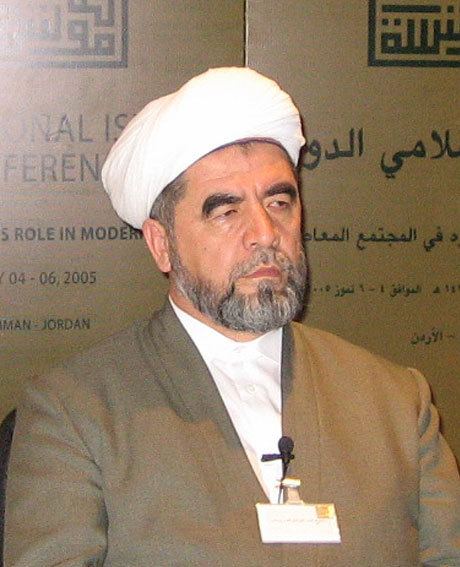Name Muhammad Muhammad | Role Grand Mufti | |
 | ||
Died March 10, 2015, Tashkent, Uzbekistan | ||
Sheikh Muhammad Sadik Muhammad Yusuf (Muhammad Sodiq ibn Muhammad Yusuf ibn Muhammad Ali) was born in the region of Andijan (vilayah) on April 15, 1952 and died on 10 March 2015. He was the son of Muhammad-Yusuf qori (who died in 2004), who was the son of Muhammad-Ali scholar Andijani. He was the mufti of the Spiritual Administration of the Muslims of Central Asia and Kazakhstan. He was Uzbekistan’s first mufti after independence. Muhammd Sodiq was a member of a number of Islamic Institutions, including the International Union of Muslim Scholars (IUMS), a non-governmental organization of Islamic scholars.
Contents
Biography
He received his primary religious education from his father. After he finished a middle school in 1970, Muhammad-Sodiq was accepted into the Mir-i Arab madrassa in Bukhara. He then studied at the Tashkent Islamic Institute named after Imam al-Buxori in Tashkent, finishing with distinction in 1975. After finishing the education, he worked as editor in "Muslims of the east of the Soviet Union" journal.
In 1976, sheikh Muhammad Sodiq Muhammd Yusuf was admitted to ad-Dawa al-Islami National Islamic University in Libya, which he finished with distinction and a financial award. This period of study exposed him to a future generation of Muslim imams, mostly from the Arabic world but even reaching to places as far away as Japan.
Sheikh Muhammad-Sodiq was elected mufti by the SADUM in March 1989, and in the same year he was elected as a deputy to the Supreme Soviet of the USSR. Sheikh presented a report to the former Soviet Union President Mikhail Gorbachev explaining the problems of Muslims rights in the protocol. He asked to return Muslims their rights to pray, to learn the religion. In Sheikh's meeting with Gorbachev, positive changes have been seen in the policy towards the religion in the communist regime. With sheikh's efforts, numerous mosques and madrassas were built in the Soviet Union. The Muslims were allowed to follow their religious traditions and ceremonies. The hajj of Soviet Muslims in 1991 (1,500 persons) took a "massive" character compared with all the previous years.
In 1997 Sheikh Muhammad Sodiq Muhammd Yusuf was put in charge of Muslim countries and federations of the Commonwealth of Independent States within Rabita al-Alam al-Islami (Muslim World League), an international Islamic organization in Saudi Arabia. He was a permanent member of the governing council of this organization.
Muhammad-Sodiq died on March 10, 2015, after suffering a heart attack.
Writings
Sheikh wrote many sunni books. From 1994 to 2000 he published approximately thirty popular articles and twenty-five books and pamphlets. Most were written in Uzbek, and some were translated into Russian. The Kara Su branch of the press of the Islamic cultural center in Osh, Kyrgyzstan, published most of Muhammad-Sodiq’s writings during that period.
His best books include: Tafsiri Hilal (Translation and interpretation of the meanings of the Glorious Qur'an, in 6 volumes), Hadith wa Hayot (Hadith and life, series of books talking about the history and all details of Islam systematically in details, history of all prophets.., around in 40 volumes.), Ruhiy tarbiya (Spiritual attitude development/education, 3 volumes), Kifoya (books on fiqh (Islamic law) 3 volumes), and many other books, booklets, audio and video materials in Islam and translations of Imaam Al Buhariy's famous books into Uzbek language.
In all of his books since 2002 he writes the following credo at the beginning, in the style of an Islamic movement that is seeking to transcend the divisions within the faith:
